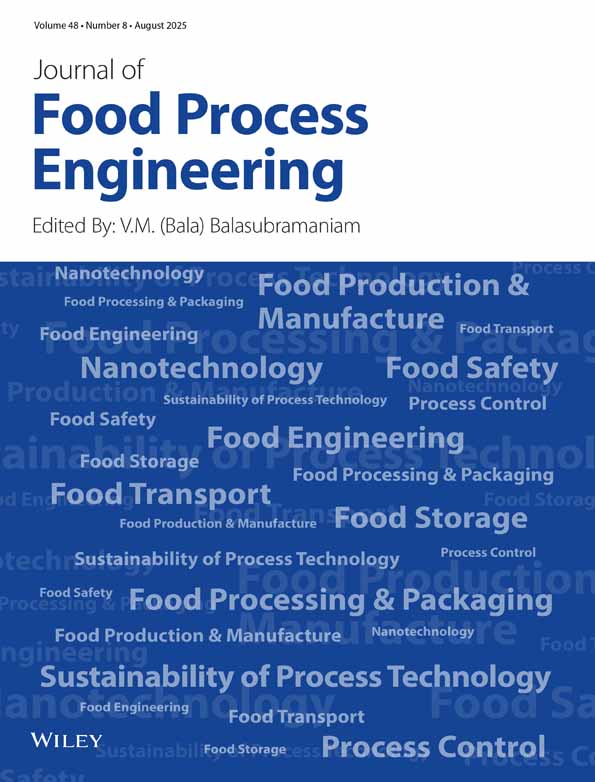A PREDICTIVE MODEL FOR THERMAL CONDUCTIVITY OF AN INTERMEDIATE MOISTURE GRANULAR FOOD
ABSTRACT
A mathematical model for prediction of thermal conductivity of granular foods was developed to consider the influence of moisture content and bulk density. The range of moisture contents considered was from approximately 20% (db) to 150% (db). The model considers the influence of thermal conductivity and volume fraction of product solids and water as a first step in predicting thermal conductivity of product particles. The second step in the predictive model considers thermal conductivity and volume fraction of the product particles and air when predicting effective thermal conductivity of the food system. The model was evaluated by comparison of model outputs with experimental measurements for casein and corn meal starch particles. Experimental measurements of thermal conductivity were obtained using a thermal conductivity probe. The model provided excellent prediction of effective thermal conductivity over the entire moisture content range. Statistical agreement was described by standard errors of 0.0143 W/mK (7.2%) for starch at 25C, 0.01835 W/mK (12.1%) for casein at 25C, and 0.02584 W/mK (16.4%) for casein at 40C, with most of the variability associated with experimental measurements.




